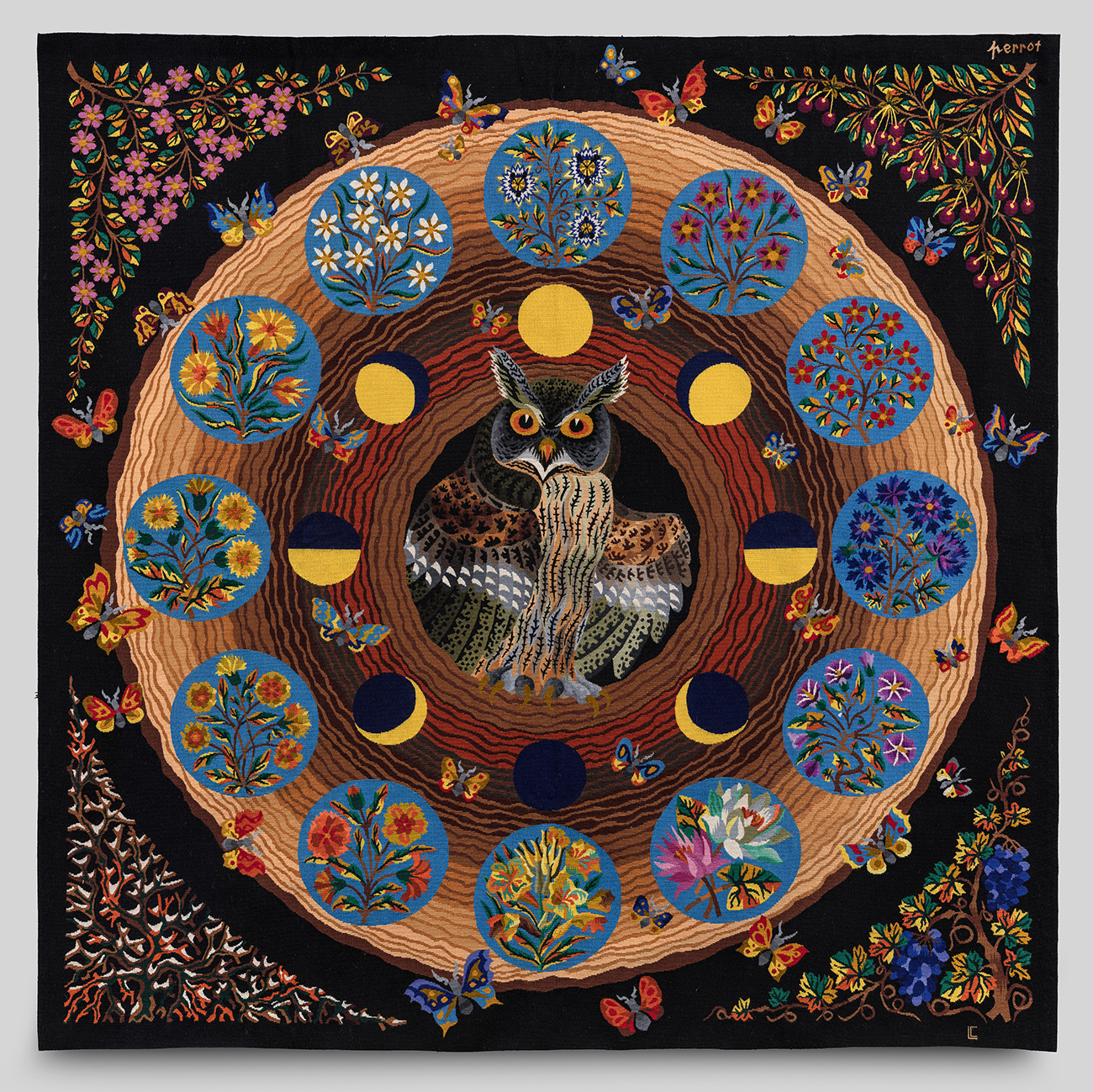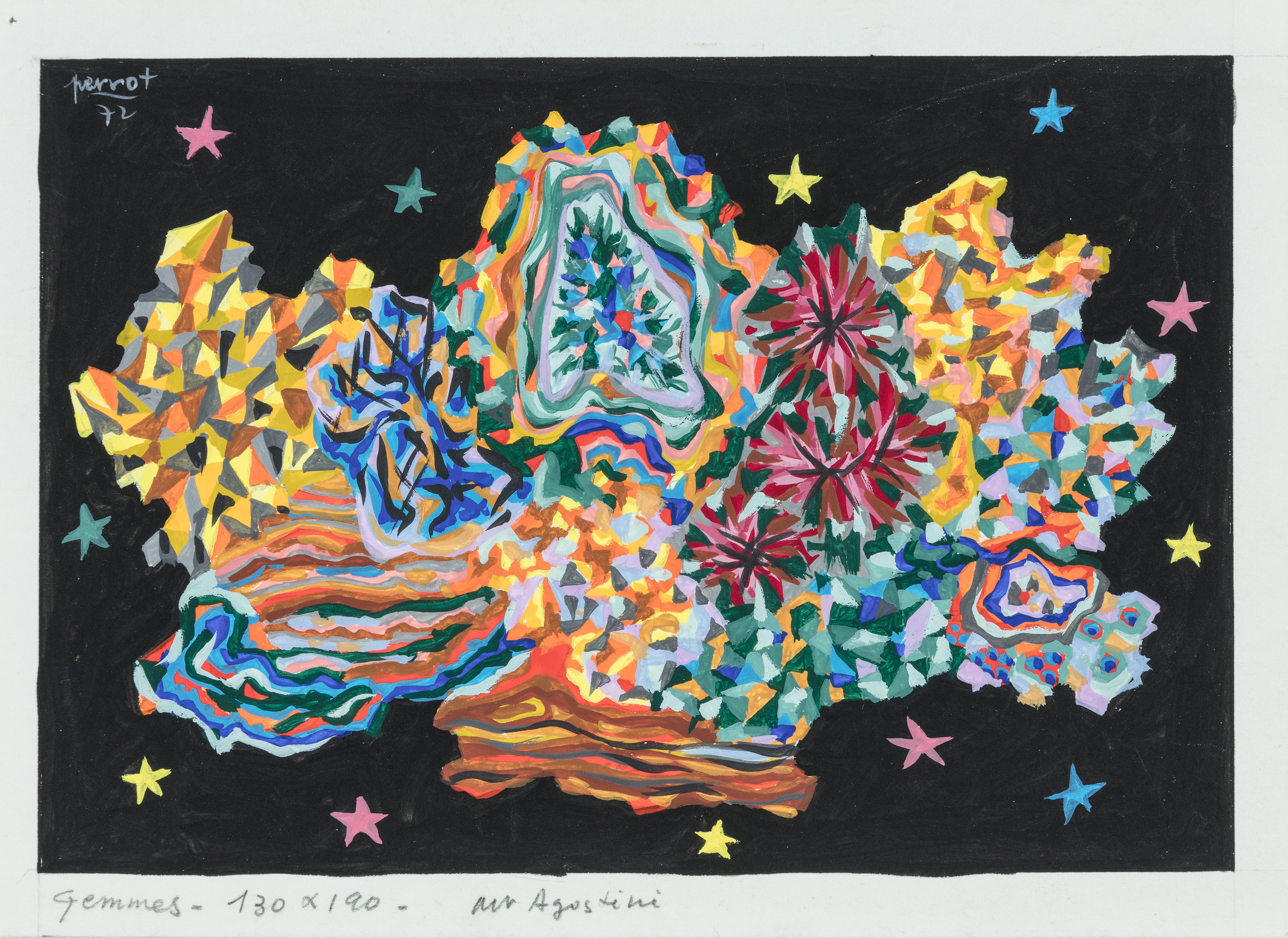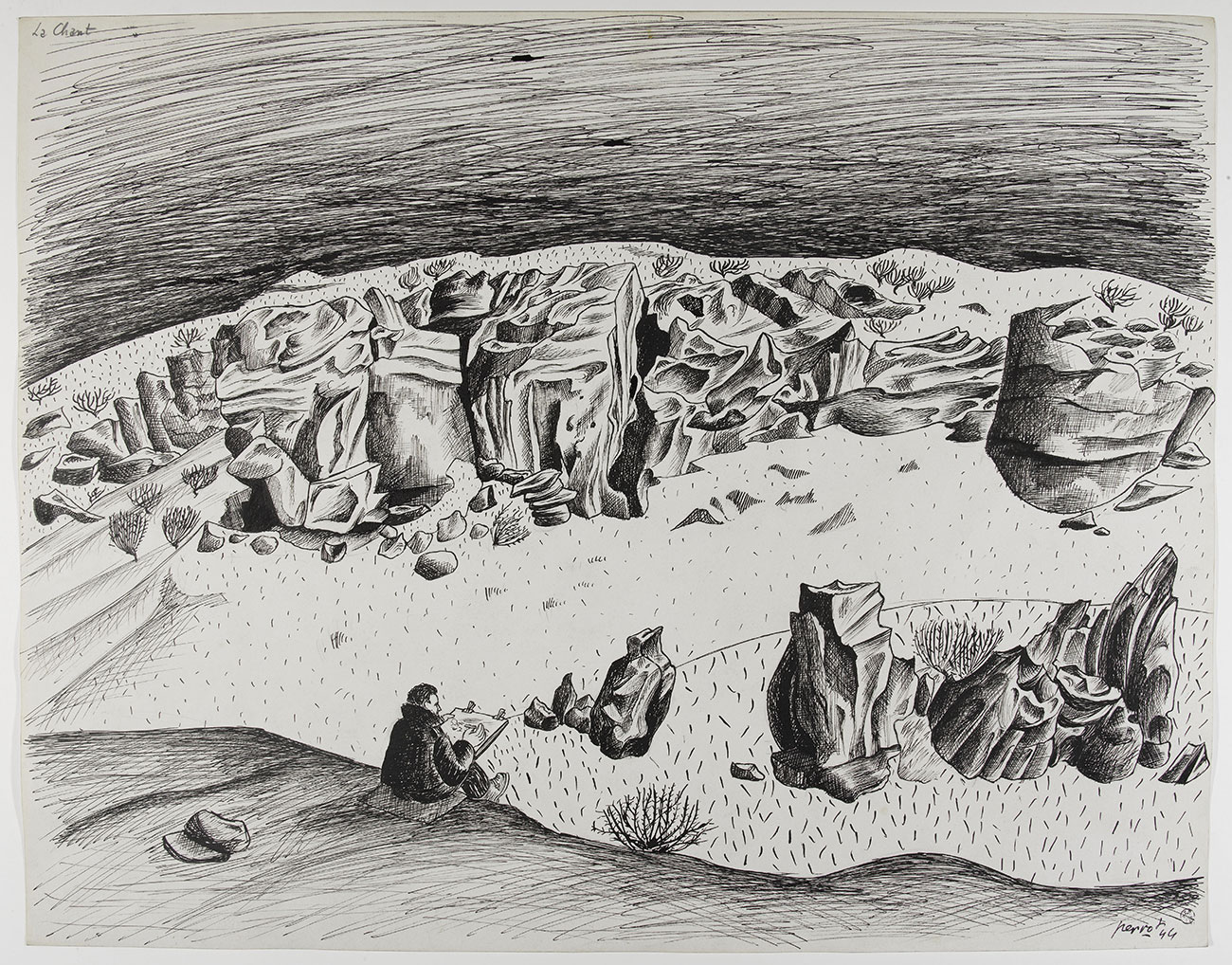René Perrot
My poor heart is an owl
Mucem, fort Saint-Jean—
Fort Saint-Jean Georges Henri Rivière Building (GHR) 320 m2
|
From Friday 24 November 2023 to Sunday 10 March 2024
René Perrot (1912-1979) was a prolific artist, constantly experimenting with new styles and techniques. He is particularly well known for his tapestries, the result of public commissions to decorate official buildings, ministries and embassies throughout the world. This exhibition offers an opportunity to rediscover the scope, richness and sensitivity of his work. Deeply pacifist, his oeuvre is marked by the history of his time and its upheavals, the Second World War constituting a turning point in his professional journey.
The son of school teachers and grandson of farmers, René Perrot studied at the École Nationale des Arts Décoratifs before working as a poster artist until the beginning of the Second World War. A staunch antimilitarist, he denounced the absurdity of the war which he depicted in posters. After the French defeat at the hands of Germany, he undertook field research for the Musée des Arts et Traditions Populaires, taking an artistic look at the French countryside. As was the case for a number of architects, decorators and artists, this protection afforded to him by the museum allowed him not to be too concerned about his political views given the troubled context. He began his field work in his native village of Cuse (in the Doubs) and its surroundings in 1942 and 1943, moving on to the Cantal in 1944, and then the eastern Pyrenees in 1945.
He produced a large number of paintings and posters, nearly four hundred of which are preserved at the Mucem, documenting a variety of themes, from architecture to landscape, crafts to agriculture, and the realities of daily life to the spectacle of festivals. His work is marked by his artist's training and sensitivity, the sense of his duty as a field investigator for the museum, and the political and social context of the Second World War, from which he drew a questioning, thoughtful portrait of a France in full transformation. The result is a portrait of rural France that is on the one hand precise, almost scientific, and on the other, idealised, and almost utopian.
After this experience in the field, he progressed to devoting most of his output to tapestry and teaching. René Perrot was deeply attached to nature and animals, and in his artistic production, they ended up replacing almost completely the humans who perhaps had disappointed him. It was in fauna, flora, the sea bed, and minerals, which he studied with rigour and precision, that he found his inspiration: their forms and bright colours fed the poetic universe of his works. From 1945 onwards, he contributed to the revival of horizontal loom workshops in the Creuse, to which he remained faithful. He produced over four hundred tapestry cartoons, from which tapestries were made by the Felletin, Aubusson and Gobelins factories, working alongside his elder, Jean Lurçat, in the revival of this mural art.
The exhibition will showcase over a hundred drawings, paintings, tapestries, and objects created by René Perrot, from the Mucem, Mobilier National and private collections.


